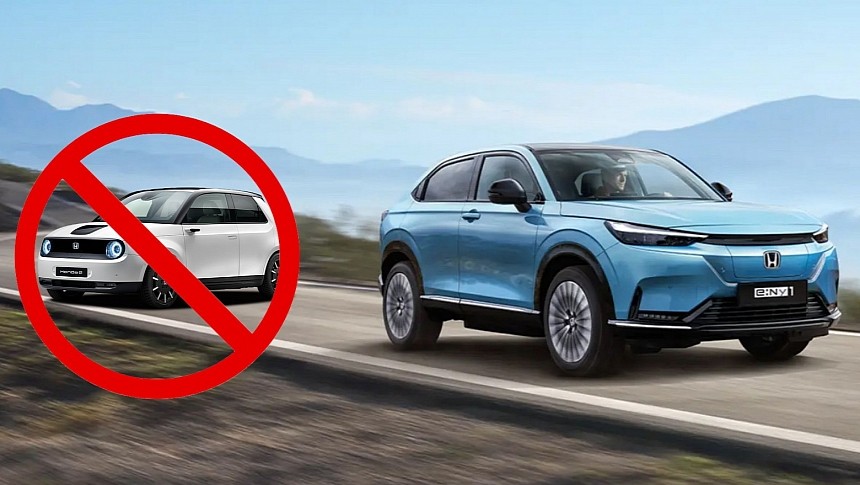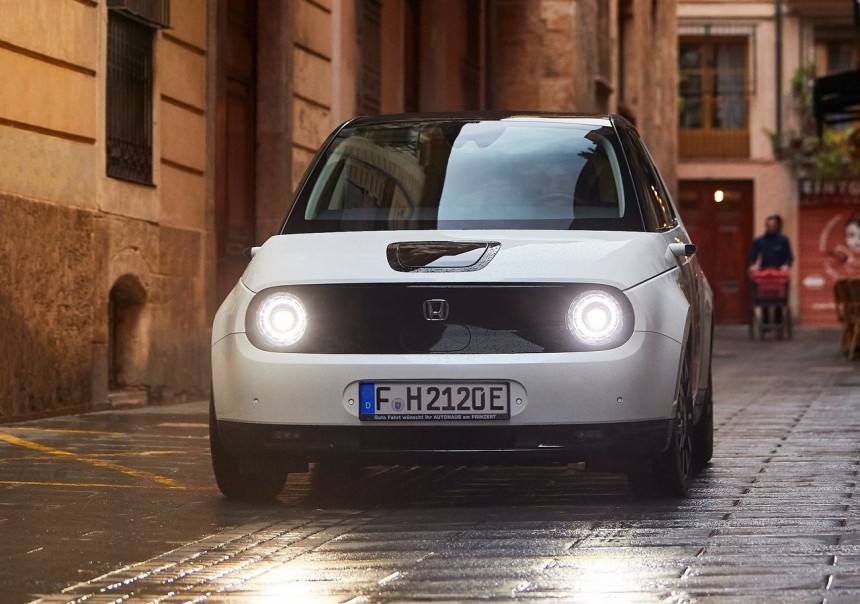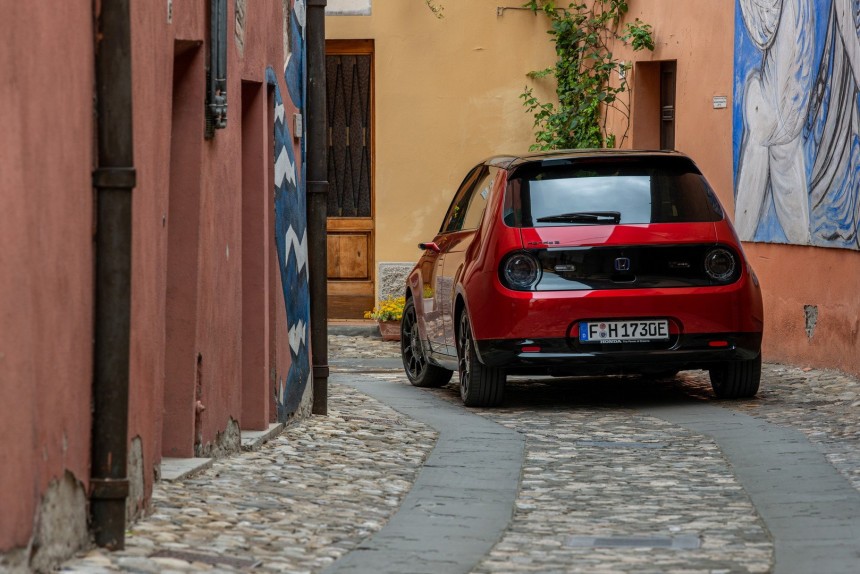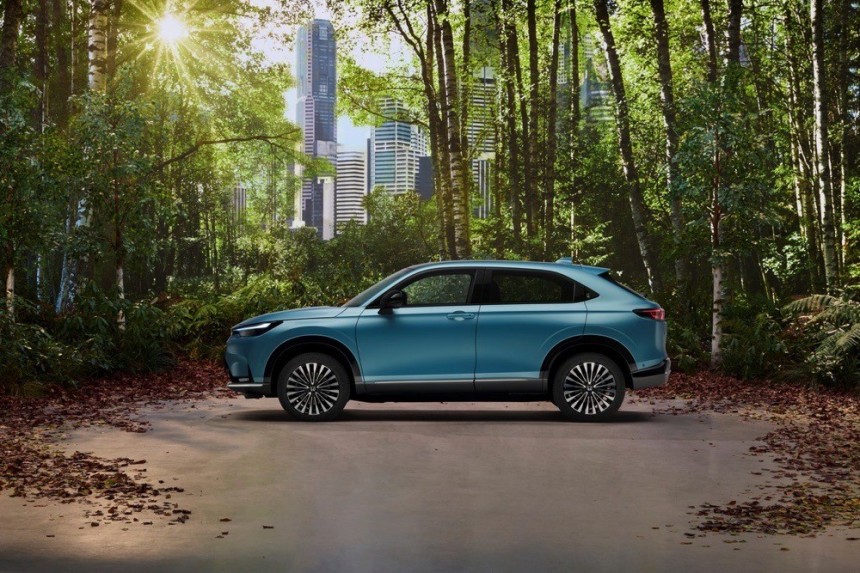Honda has recently started to announce it will sell the e:Ny1 in Europe. What reads like a new disease code is actually an electric Chinese SUV the Japanese brand will import to indirectly replace the Honda e. Anyone familiar with how things started will have only one conclusion for the sad end of this story: the market is a ruthless king. In other words, carmakers cannot risk selling vehicles just because they were praised as concepts.
The Honda e is the culmination of a tale that began in 2017 with the Urban EV concept. Some people trace it back even further to the 2009 EV-N concept, but that one gave birth to another car, the 2012 N-One. That said, they may share a few design elements and characteristics, but that's it. The Urban EV is the real origin of the electric production vehicle.
Visitors of the 2017 Frankfurt Motor Show and journalists alike cheered loudly for Honda to give the Urban EV a chance in assembly lines. The Japanese carmaker eventually decided the applause would translate into sales and gave the Honda e the green light. Its production version was presented at the last Frankfurt Motor Show, held in 2019.
The small electric hatchback allegedly faced resistance from some Honda executives – who must now be repeating "I told you so" triumphantly in the company's corridors. The battery electric vehicle (BEV) was urban, with a small battery pack and a limited range. Still, it was also a driver's car: rear-wheel drive, 50:50 weight distribution, a low center of mass, and a happy motor delivering up to 113 kW (152 hp).
For a vehicle that was only 3.89 meters (153.3 inches) long, that could have been more than enough if it was not for its weight. The Honda e tipped the scale between 1,513 kilograms (3,336 pounds) and 1,543 kg (3,402 lb). However, that was not the issue with the electric city car: being small and expensive was probably what killed it.
In Europe, prices started at around €30,000 ($33,160 at the current exchange rate). The only version still for sale in Portugal is the Honda e Advance, which costs €43,000 ($47,530). That's what Tesla currently charges for an entry-level Model Y in the US. If it does not make sense on the other side of the pond, that is even truer in the Old Continent: sales were disappointing, as charming as the Honda e was.
Ironically, this is precisely the sort of car that Transport & Environment wants European governments to force automakers to sell. The organization believes smaller BEVs with consequently tinier batteries will reduce demand for raw materials. As I said in a previous text, that is an indirect defense of hybrids and plug-in hybrids, on top of being irrealistic: nobody will manufacture cars that do not sell. Those willing to risk that will eventually face a bitter reckoning. The Honda e turned into a vivid confirmation of how true that was.
According to some websites, Honda no longer delivers new units of the electric city car, only those that are already in the inventories and were left unsold. That suggests production stopped at some point, but I was not able to confirm that. Whether that is correct or not, the deal is that the Japanese company will not develop a new generation or a replacement for the Honda e. Anyone willing to buy an electric vehicle from the automaker will have to make do with the e:Ny1, which makes it the de facto substitute for the city car.
Autocar interviewed Rebecca Adamson, head of cars for Honda UK, and the executive said the company will focus on SUVs because "that's where the market is." She also denied the Japanese carmaker will have any vehicle in the same market segment as the Honda e in the UK. In Japan, kei cars are even smaller and still have a relevant participation in sales due to the country's legislation. Anyway, BEVs do not do very well in Honda's homeland.
The e:Ny1 is an electric version of the HR-V made in China, but it is not clear which of its two joint ventures in that country is responsible for the car. Dongfeng Honda makes the e:NS1, while GAC Honda makes the e:NP1. One of these companies changed the badge of the electric HR-V they manufacture and started shipping the car to Europe. In essence, all three are the same vehicle, with the same 68.8 kWh battery pack. Being Chinese does not make the new Honda BEV affordable: in Portugal, the e:Ny1 costs €54,750 if reserved until July 31. However, it would probably be more expensive if made in Japan.
Unwillingly, Honda gave us the best possible example of where the BEV shift is leading us. Instead of a tiny and charming vehicle made in Japan, what we will get is an SUV made in China because production volumes and costs matter more than anything else in this transition process. Would the Honda e have done better if it was powered by an internal combustion engine (ICE) and cost half of what the Japanese carmaker charged for its BEV? That's very likely: most people still calculate the cost-benefit of any purchase.
Whenever you see a concept car and dream to see it in dealerships, make sure you'll have the funds to buy one as soon as it reaches the market. It may be your only chance to have that auto show piece in your garage before the automaker realizes how insane it was to believe all the praise would turn into money.
Visitors of the 2017 Frankfurt Motor Show and journalists alike cheered loudly for Honda to give the Urban EV a chance in assembly lines. The Japanese carmaker eventually decided the applause would translate into sales and gave the Honda e the green light. Its production version was presented at the last Frankfurt Motor Show, held in 2019.
The small electric hatchback allegedly faced resistance from some Honda executives – who must now be repeating "I told you so" triumphantly in the company's corridors. The battery electric vehicle (BEV) was urban, with a small battery pack and a limited range. Still, it was also a driver's car: rear-wheel drive, 50:50 weight distribution, a low center of mass, and a happy motor delivering up to 113 kW (152 hp).
In Europe, prices started at around €30,000 ($33,160 at the current exchange rate). The only version still for sale in Portugal is the Honda e Advance, which costs €43,000 ($47,530). That's what Tesla currently charges for an entry-level Model Y in the US. If it does not make sense on the other side of the pond, that is even truer in the Old Continent: sales were disappointing, as charming as the Honda e was.
Ironically, this is precisely the sort of car that Transport & Environment wants European governments to force automakers to sell. The organization believes smaller BEVs with consequently tinier batteries will reduce demand for raw materials. As I said in a previous text, that is an indirect defense of hybrids and plug-in hybrids, on top of being irrealistic: nobody will manufacture cars that do not sell. Those willing to risk that will eventually face a bitter reckoning. The Honda e turned into a vivid confirmation of how true that was.
Autocar interviewed Rebecca Adamson, head of cars for Honda UK, and the executive said the company will focus on SUVs because "that's where the market is." She also denied the Japanese carmaker will have any vehicle in the same market segment as the Honda e in the UK. In Japan, kei cars are even smaller and still have a relevant participation in sales due to the country's legislation. Anyway, BEVs do not do very well in Honda's homeland.
The e:Ny1 is an electric version of the HR-V made in China, but it is not clear which of its two joint ventures in that country is responsible for the car. Dongfeng Honda makes the e:NS1, while GAC Honda makes the e:NP1. One of these companies changed the badge of the electric HR-V they manufacture and started shipping the car to Europe. In essence, all three are the same vehicle, with the same 68.8 kWh battery pack. Being Chinese does not make the new Honda BEV affordable: in Portugal, the e:Ny1 costs €54,750 if reserved until July 31. However, it would probably be more expensive if made in Japan.
Whenever you see a concept car and dream to see it in dealerships, make sure you'll have the funds to buy one as soon as it reaches the market. It may be your only chance to have that auto show piece in your garage before the automaker realizes how insane it was to believe all the praise would turn into money.


































